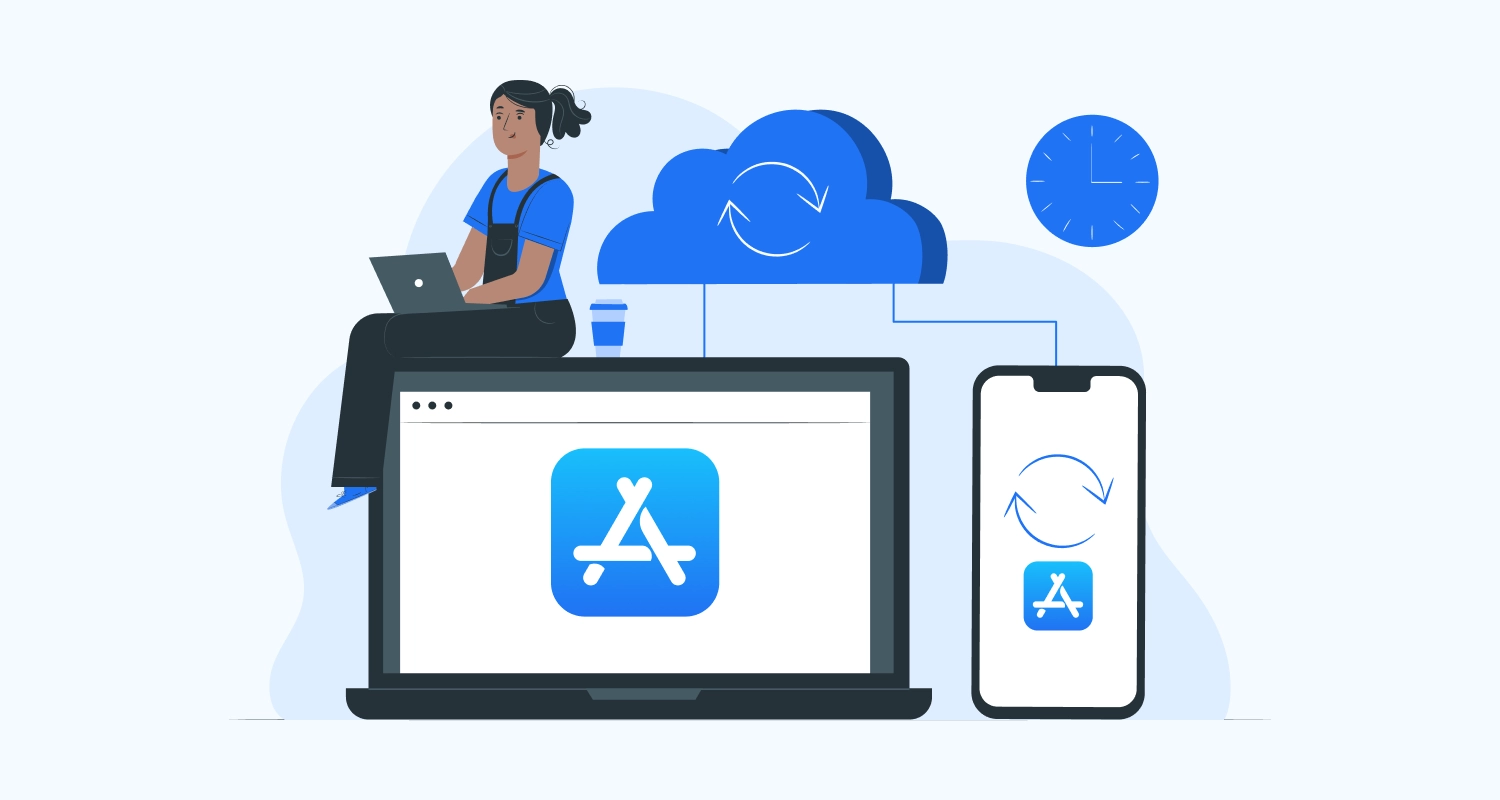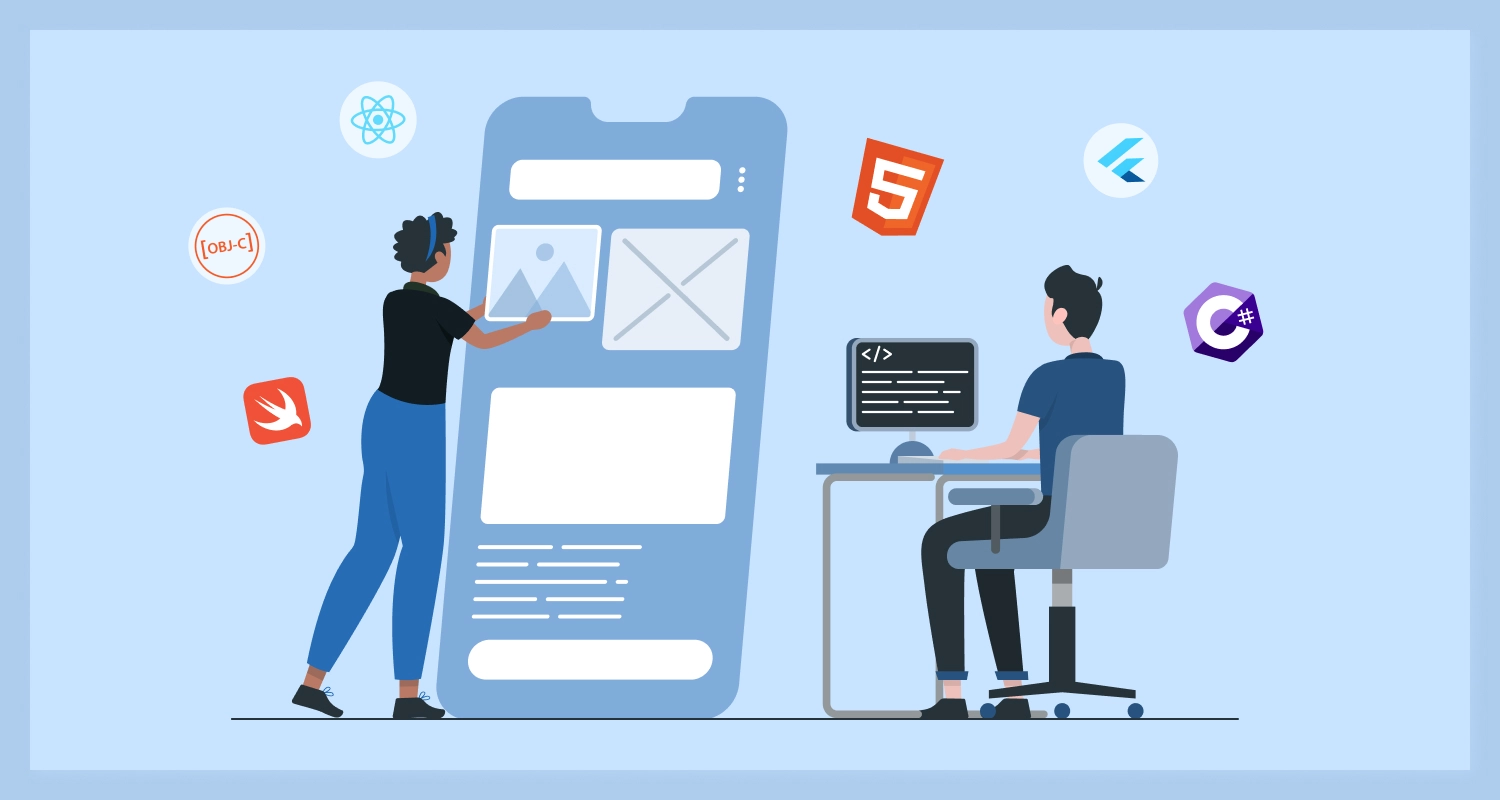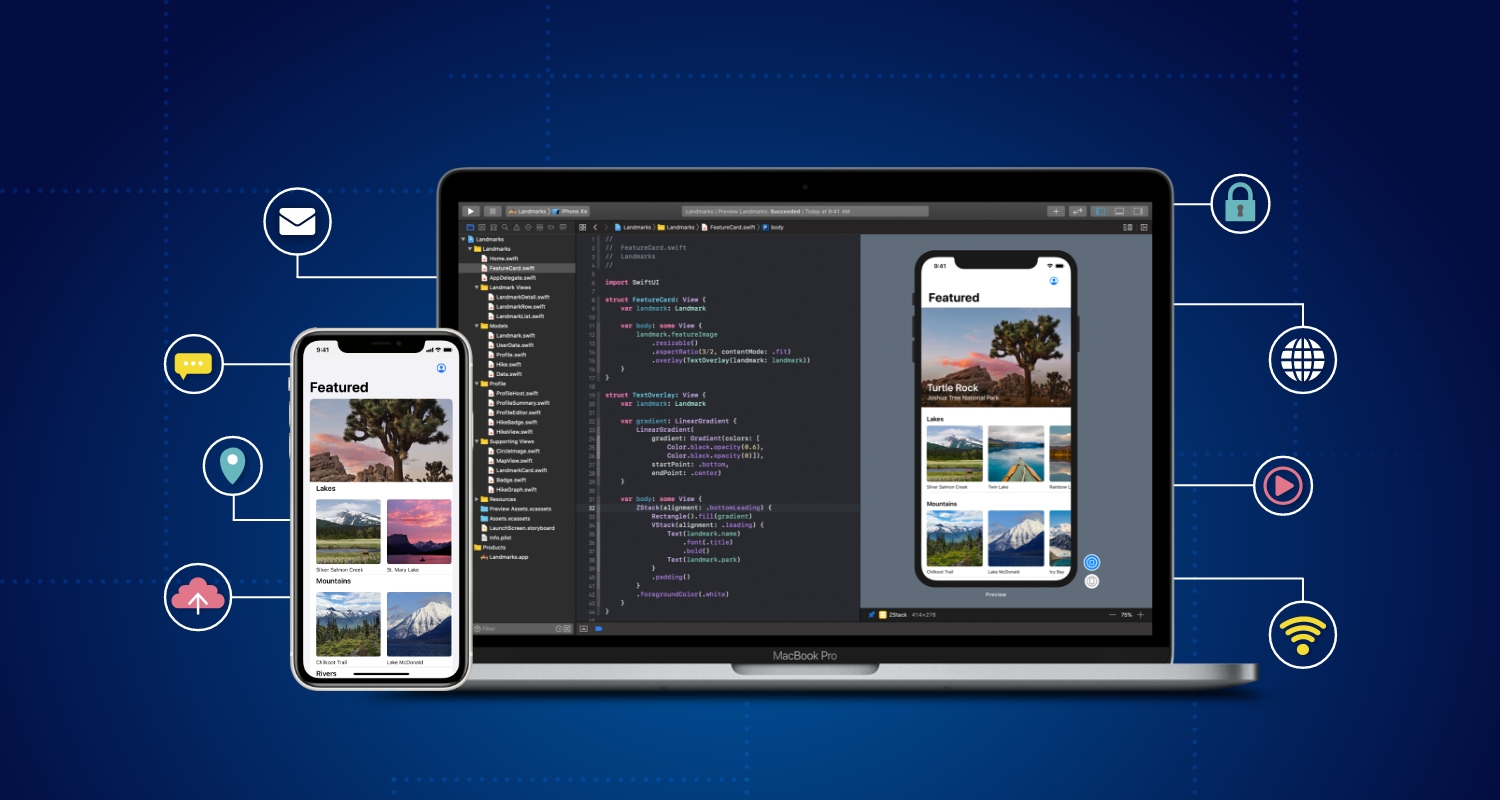With the tremendous growth of mobile app development globally, Swift has added a new dimension to the developer community adding more fuel to the fire. Swift is a programming language launched by Apple Inc. in 2014 at the Worldwide Developers Conference (WWDC) event. It quickly became one of the fastest-growing languages as it makes the software incredibly fast and safe by design which is definitely a huge plus for mobile app development. Moreover, swift has gone open source under Apache license.
Swift is a compiled programming language created for iOS, OS X, watchOS and tvOS apps that builds on the best of C and Objective-C. It is designed to work with Apple’s Cocoa and Cocoa Touch frameworks. It is built with the LLVM (Low-Level Virtual Machine) compiler which is included in Xcode 6 beta and uses the Objective-C runtime allowing Objective-C, Objective-C++, and Swift code to run within a single program. From the disclosures made by the specialists, it is clear that Swift is an innovatively better programming language for iPhone application development.
Features of Swift
Types, variables and scoping: In Swift, many common classes like NSString, NSArray, and NSDictionary have been promoted to the language’s core and can be manipulated directly. Swift supports three levels of access control: public, private & internal. Private control is accessible only in containing source file and internal control is accessible in containing module while public control is accessible from any module.
Optional and Chaining: Optional chaining is a process for querying and calling properties, methods, and subscripts on an optional that might currently be null. Optional type allows references or values in a similar pattern of C where pointer refers to a value or null. This implies that non-optional types cannot result in a null-pointer error. Optional chaining in Swift is similar to messaging null in Objective-C, but it works for any type and that can be checked for success or failure.
Value types: In Swift, there is built-in support for objects by choosing either pass by value or pass by reference semantics. Due to this, the developers are free to choose semantic for each data structure according to their requirement in applications. To get improvement in performance, pass by value concept is widely used in all common data types like int & double as well as in objects like string and array. By using this Value type in user application you can get significant improvement in the performance.
Protocol-oriented programming: Protocol-oriented programming is basically an OOP paradigm that depends on the use of protocols (known as interfaces on basis of Swift terminology) and structures over classes. A particular class implements a set of methods, which means that other objects can call all those methods on any object supporting that protocol. This protocol support variety of instances by writing it once.
Libraries, runtime, and development: Swift uses the same runtime as Objective-C system does but requires iOS 7 / OS X 10.9 or higher specification. C++ code can’t be directly accessible, so those create Objective C or C wrapper between Swift and C++.
Memory management: Automatic Reference Counting (ARC) is used by Swift to manage memory. It uses ARC to make the memory allocation and deallocation easier. There’s the possibility of creating a Strong reference cycle with ARC, where two different classes include a reference to others, causing them to become leaked into memory as they are never released. Swift provides weak and unowned keywords that prevent Strong reference cycles to occur.
Debugging and other elements: Within the development environment Swift system has an ability to be cleanly debugged. It uses the Read-Eval-Print loop (REPL) which gives an interactive property in common. If the code changes with time or with some other ranged input value than the view can be used with the Timeline Assistant to demonstrate the output in an animated form. Apple claims that Swift is the first industrial-quality systems programming language which is as meaningful and pleasant as a scripting language.
SEE ALSO: Best SwiftUI Libraries
Benefits of Swift
Latest approach for programming: Swift has been developed by latest research on the programming language. Developers find memory management more efficient as Swift automatically discards the unused information and makes the memory free. Swift also make semicolon optional, again simplifying the process.
Safer Development: Swift eliminates unsafe code. The initialization of variables is must for use, arrays are checked for overflow. The automatic garbage collection feature of it ensures that the unused or unwanted data is deleted automatically. Therefore, it makes the entire process of developing an application extremely safe and very easy.
High Speed: By using Swift the performance of Application become faster and better since the Low-Level Virtual Machine Compiler converts the developer’s code into native code. Rather than this the syntax and standard libraries have also tuned for better performance of Swift Code.
How It Changes the Future of Mobile Apps?
According to many developers, Swift is easy to understand and use. Swift allows the developer to write the safe and more reliable code which saves their time and helps them to create richer applications. More and more developers are incorporating Swift code into their apps due to several benefits.
It’s only available in IOS app and only Apple has the rights to use this technology for its own platform. That is why it does not affect any other mobile platforms. Swift is now an open Source with new tools and resources are added to it. Try using Swift in your next application to get amazing experience.








